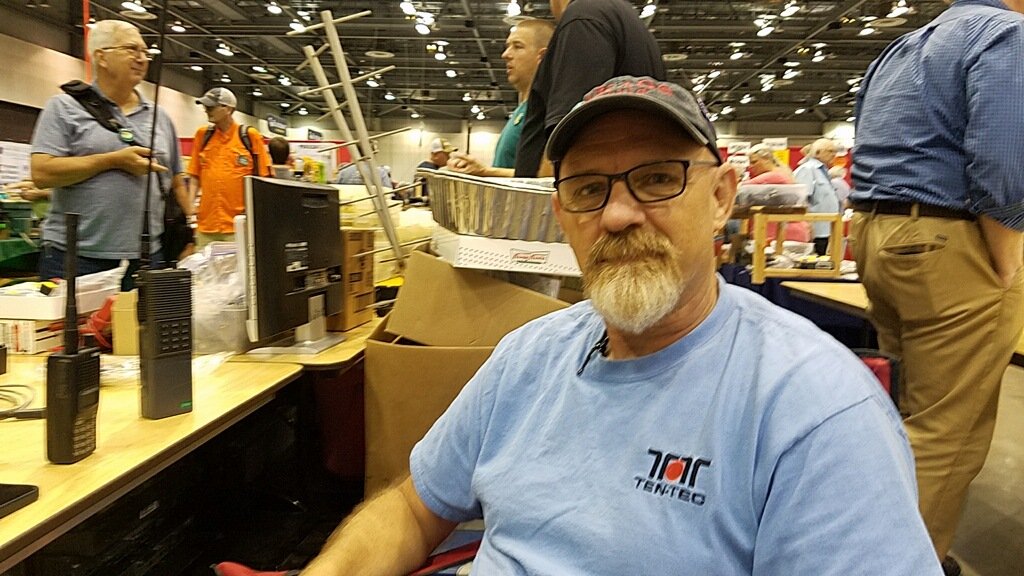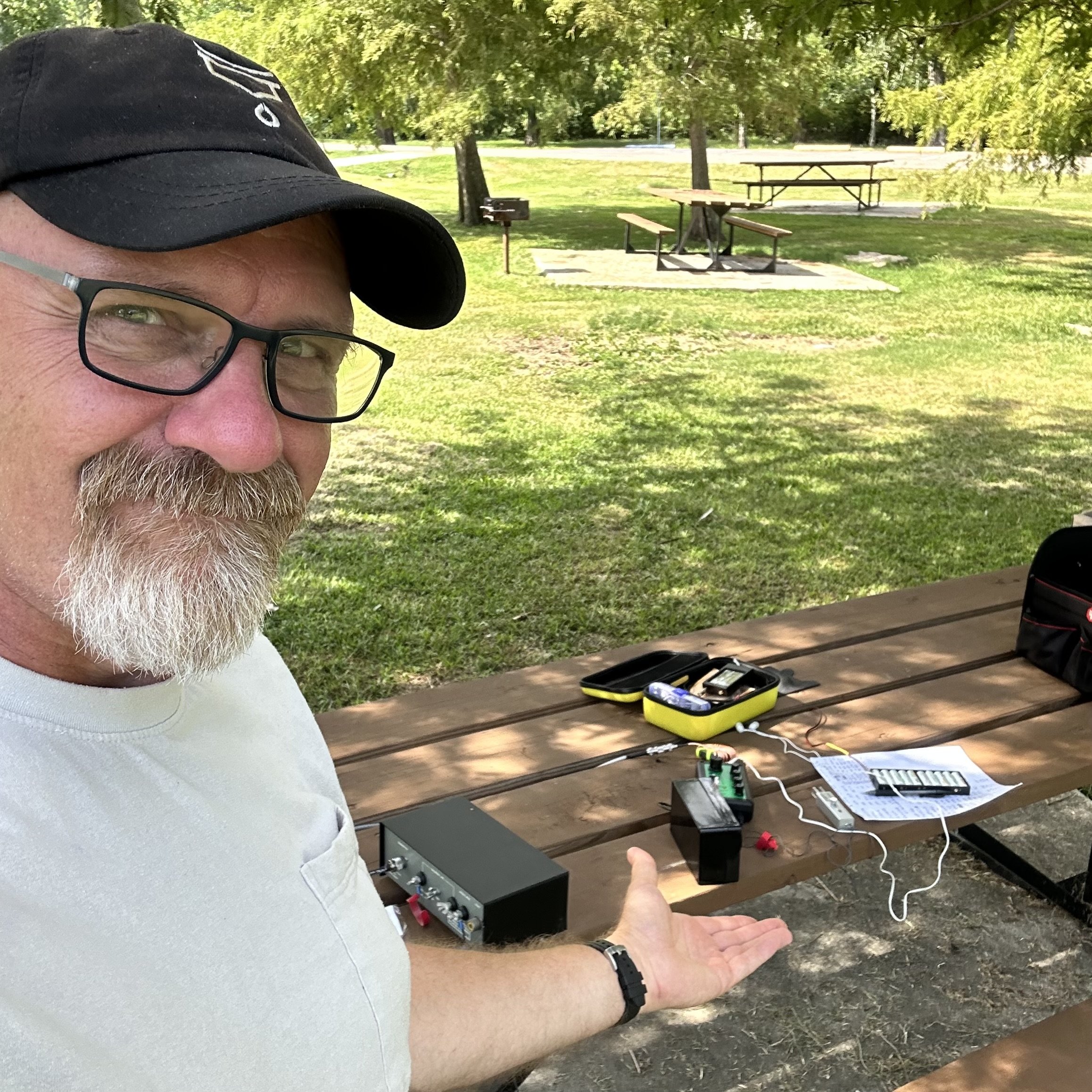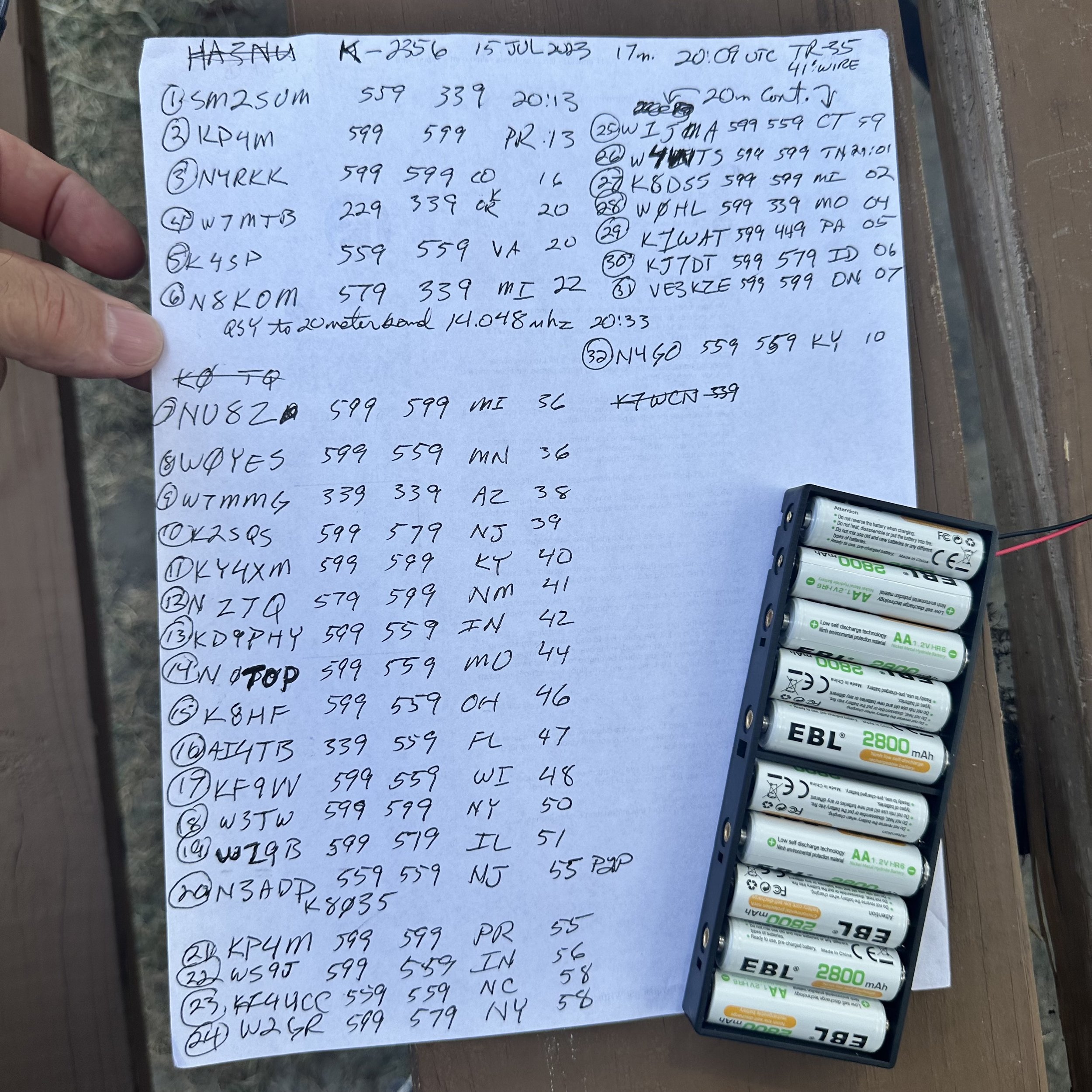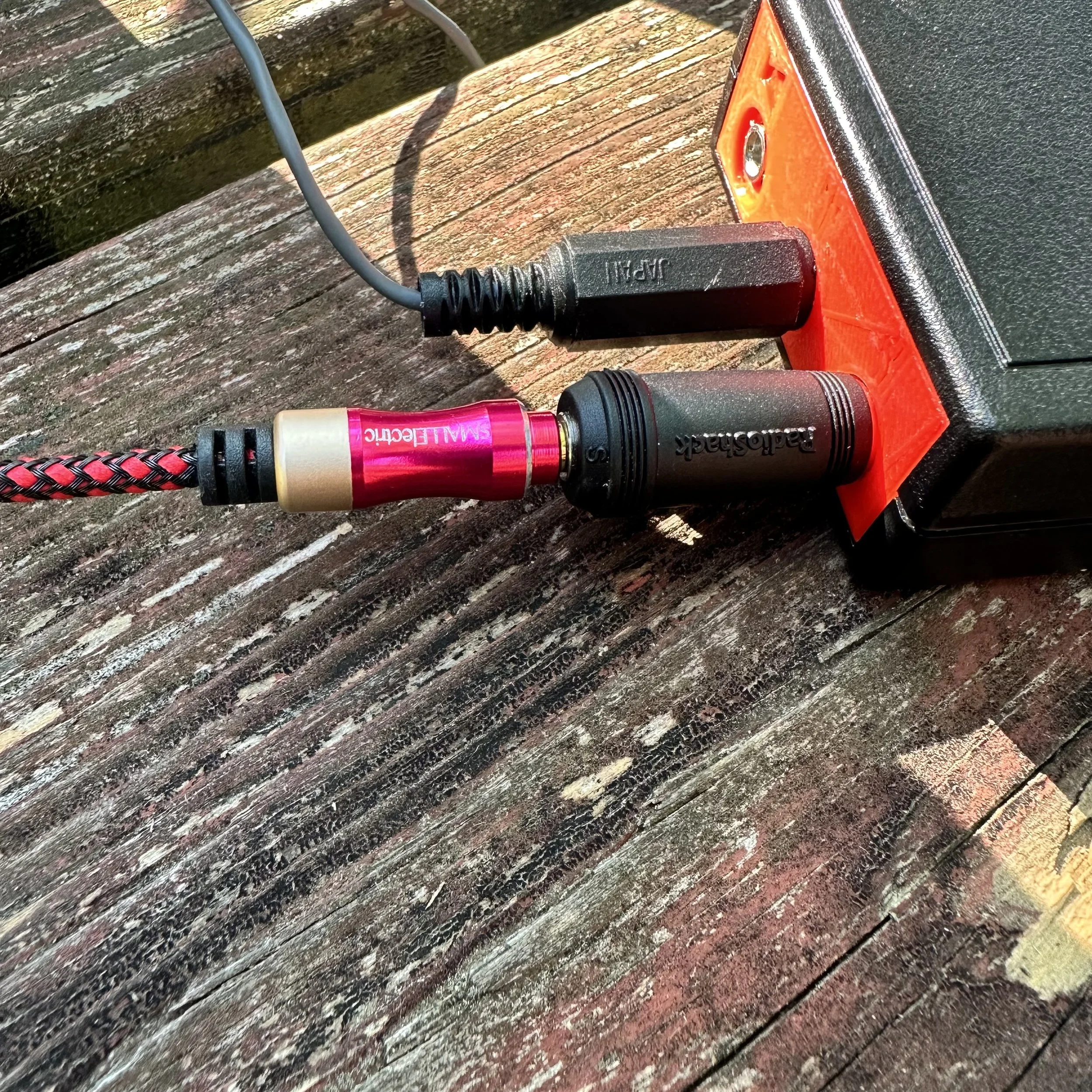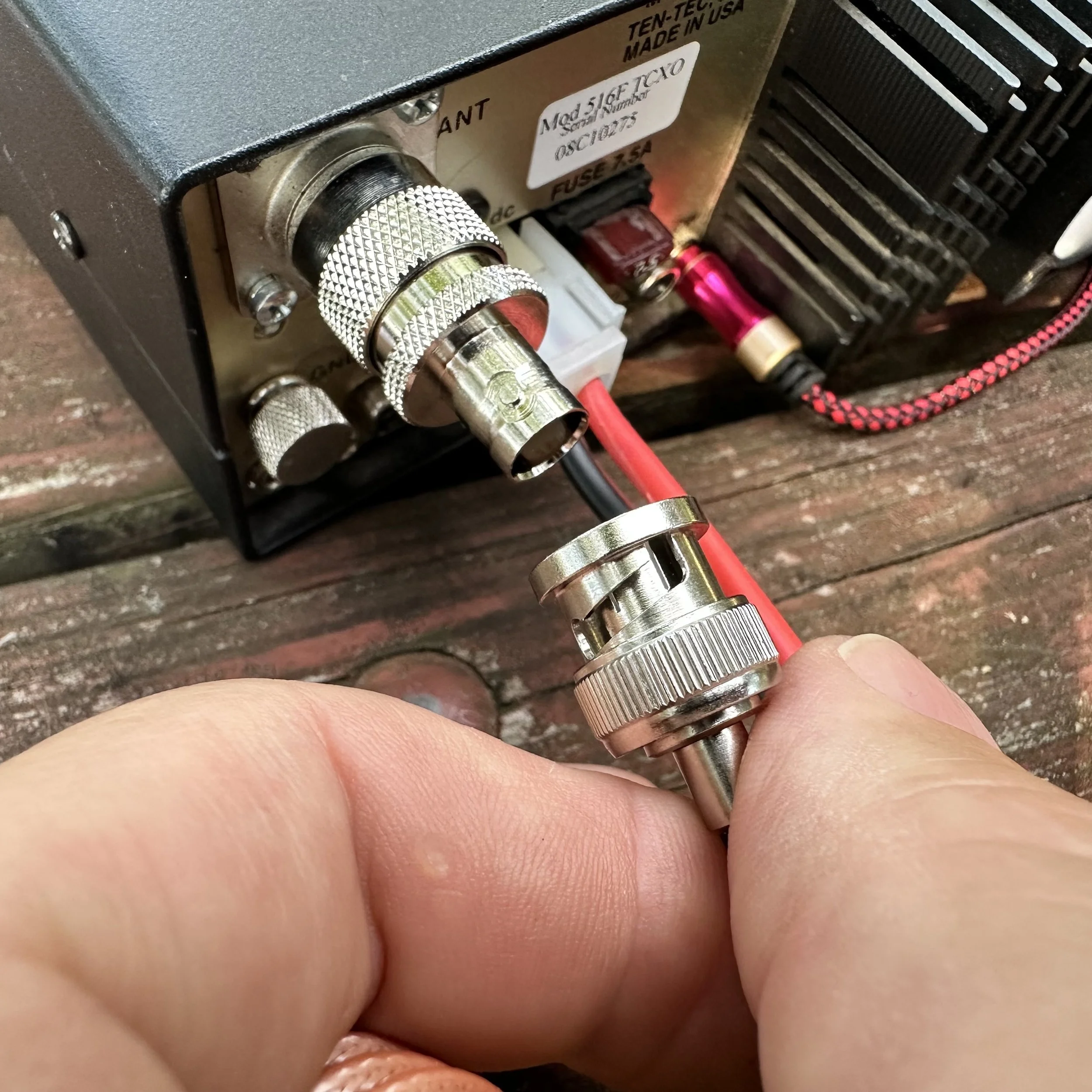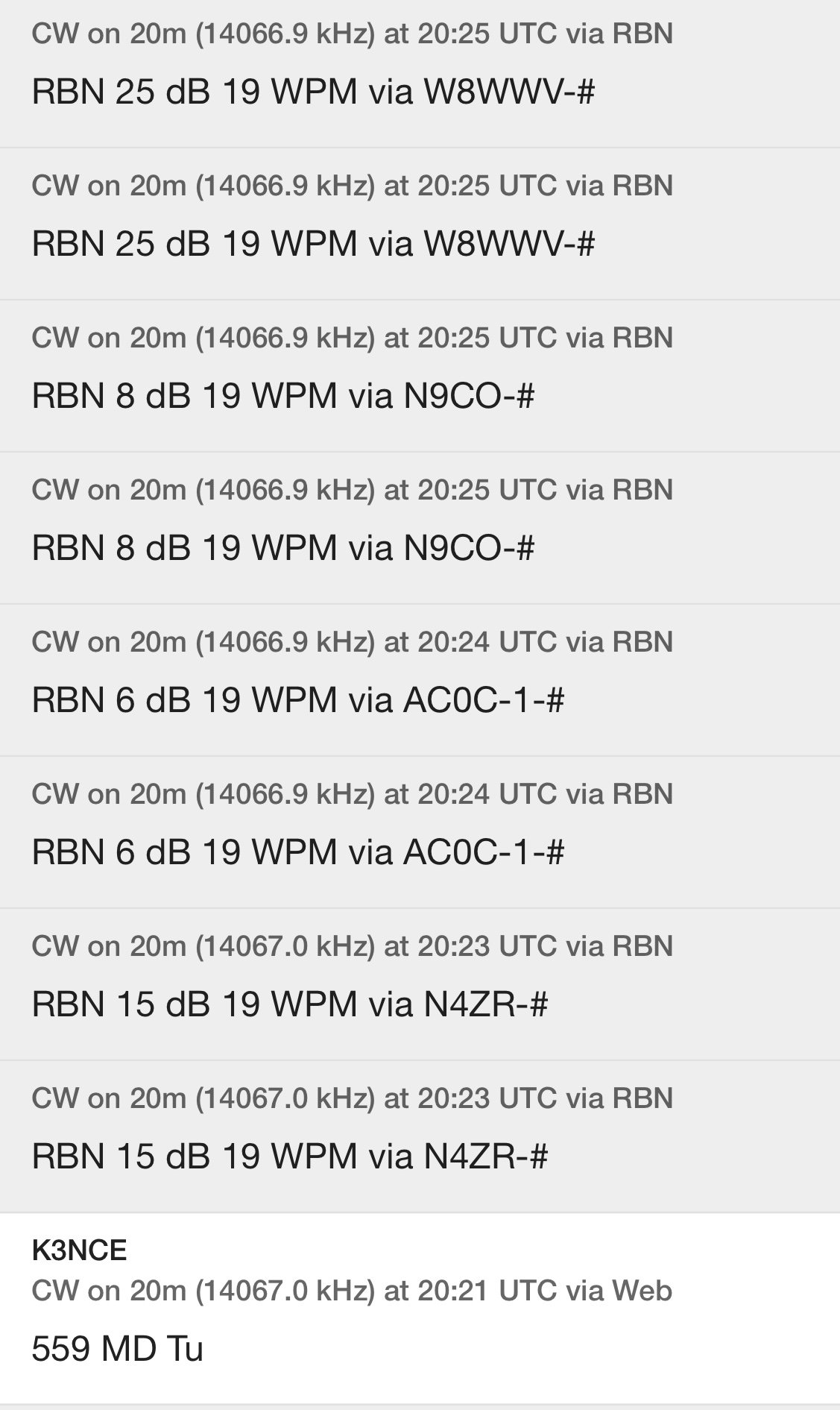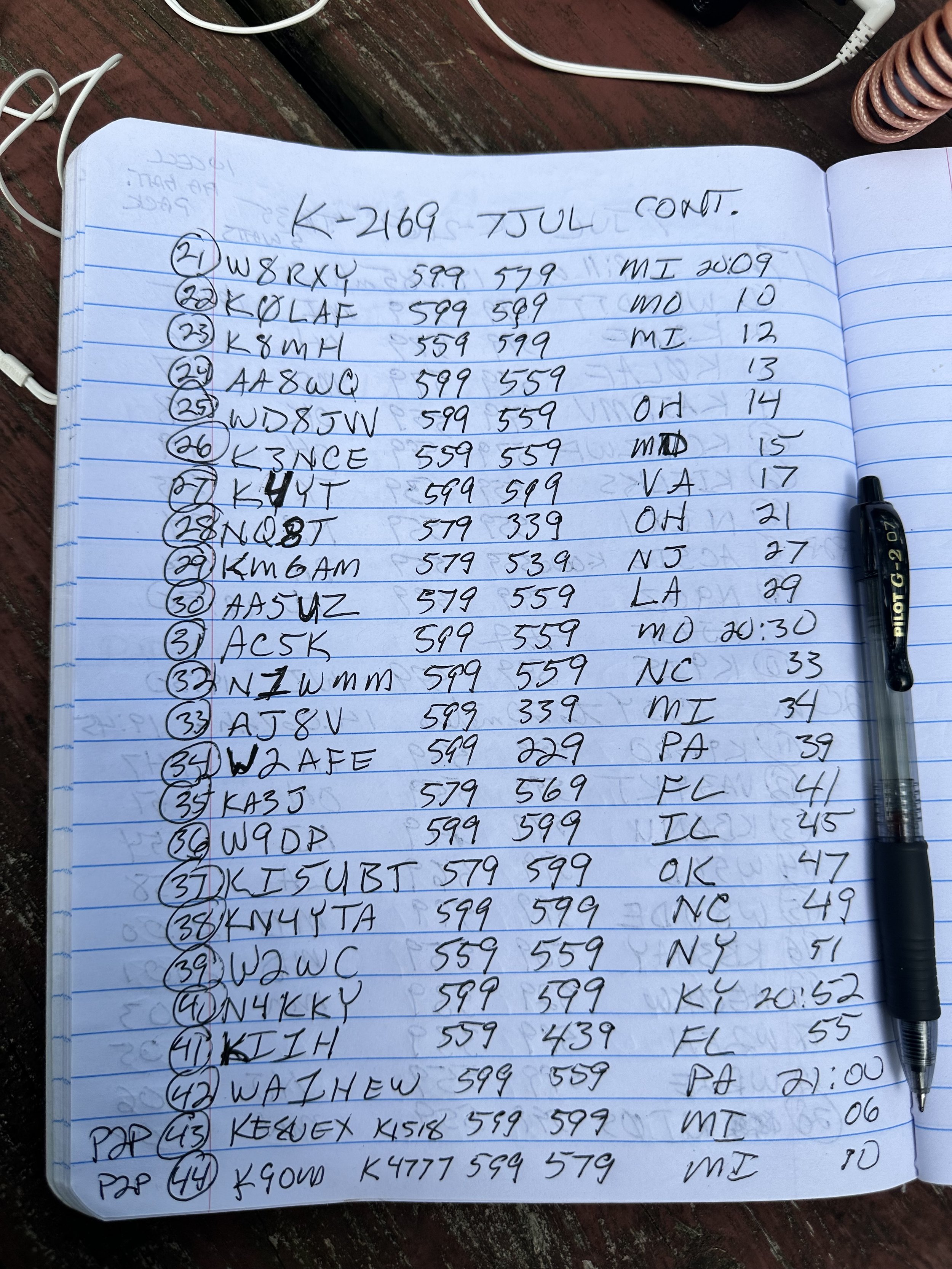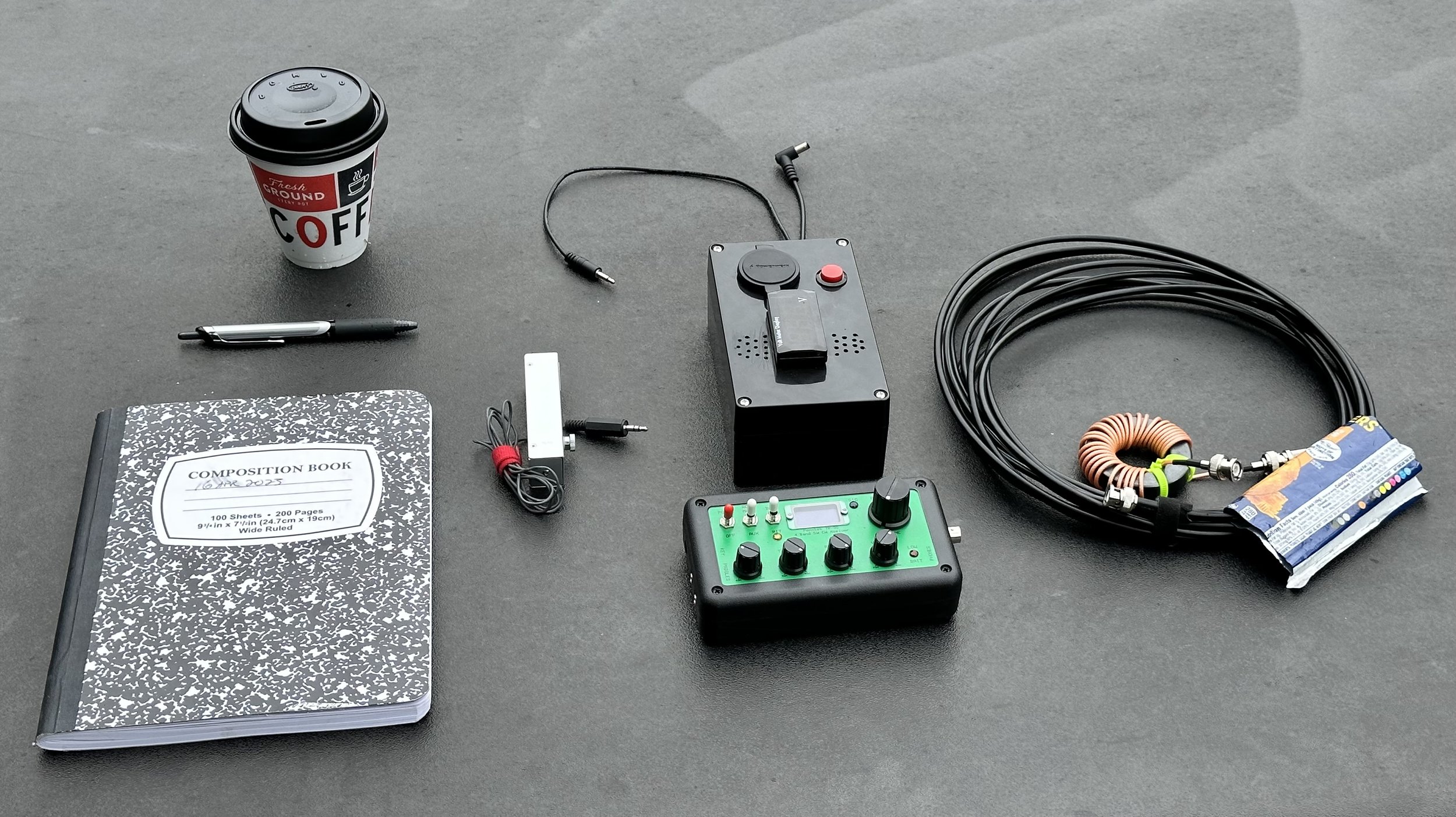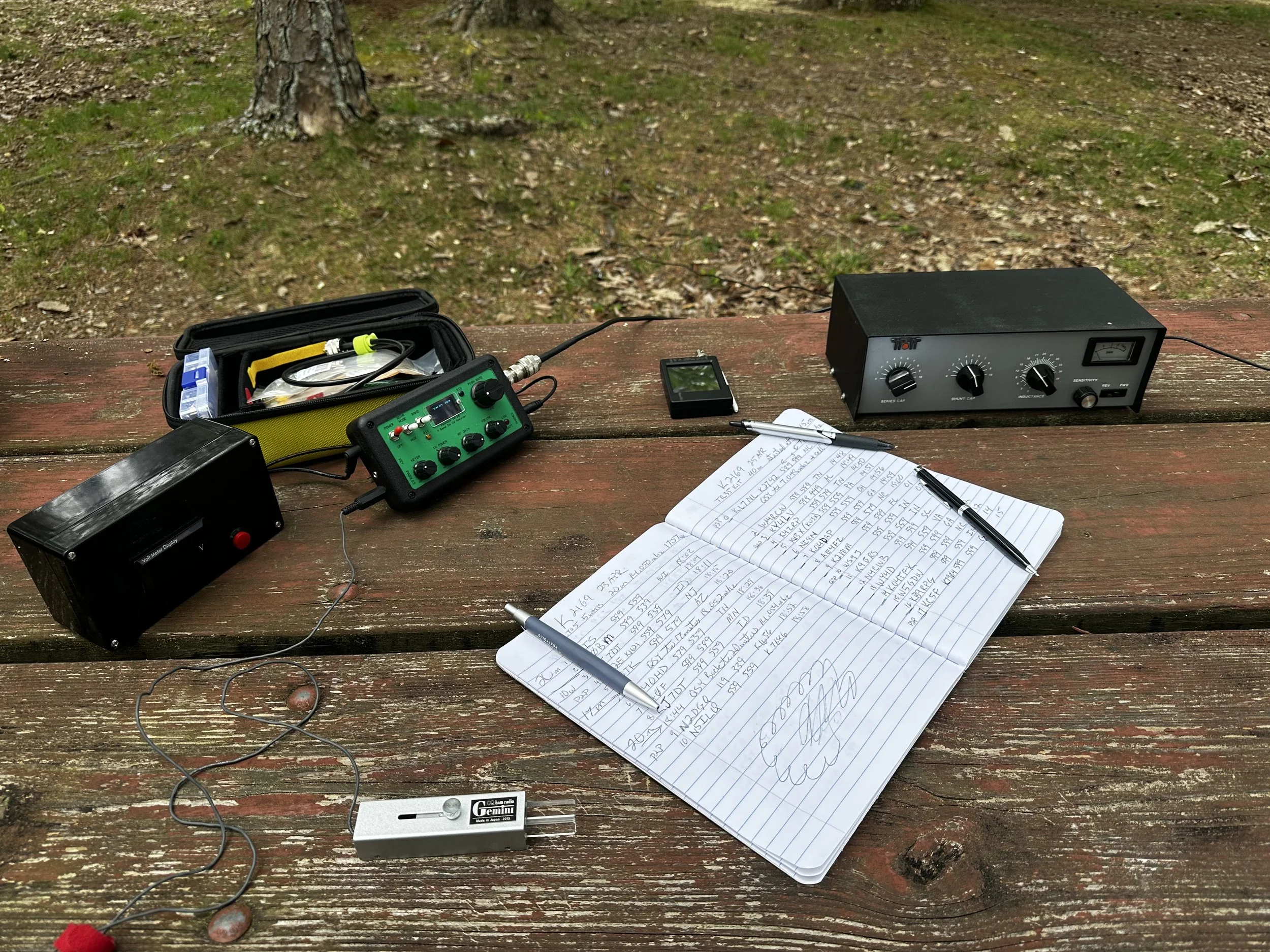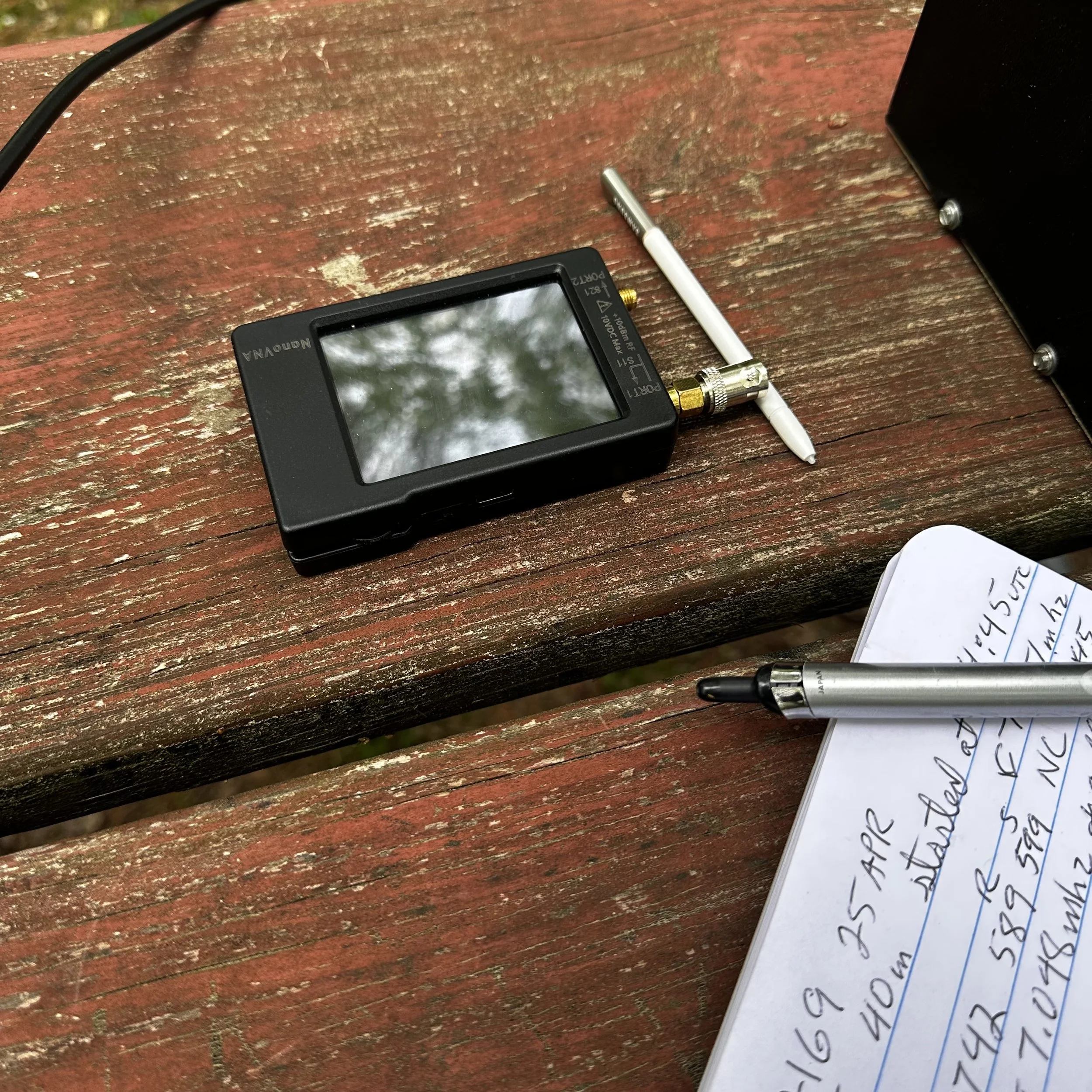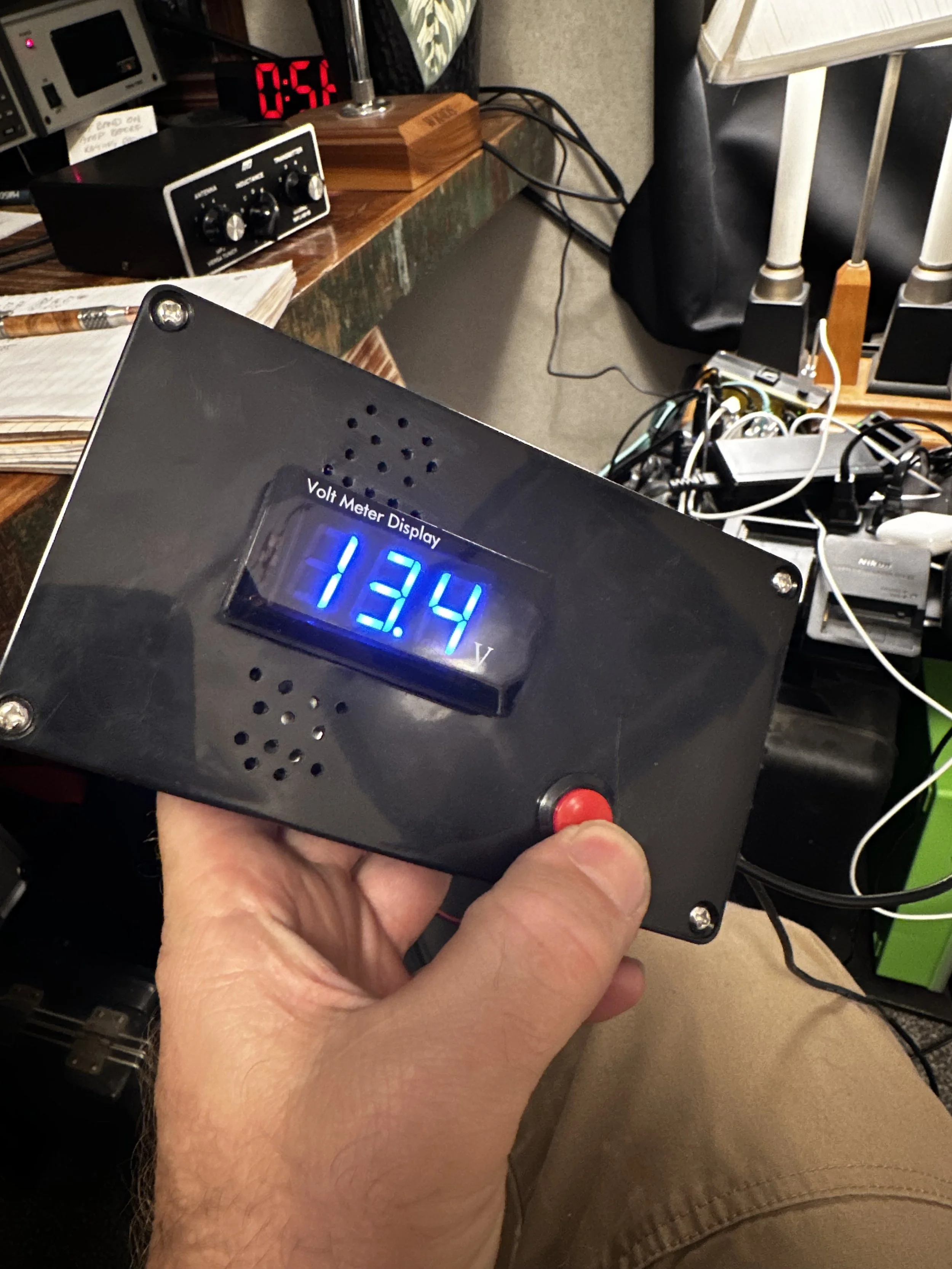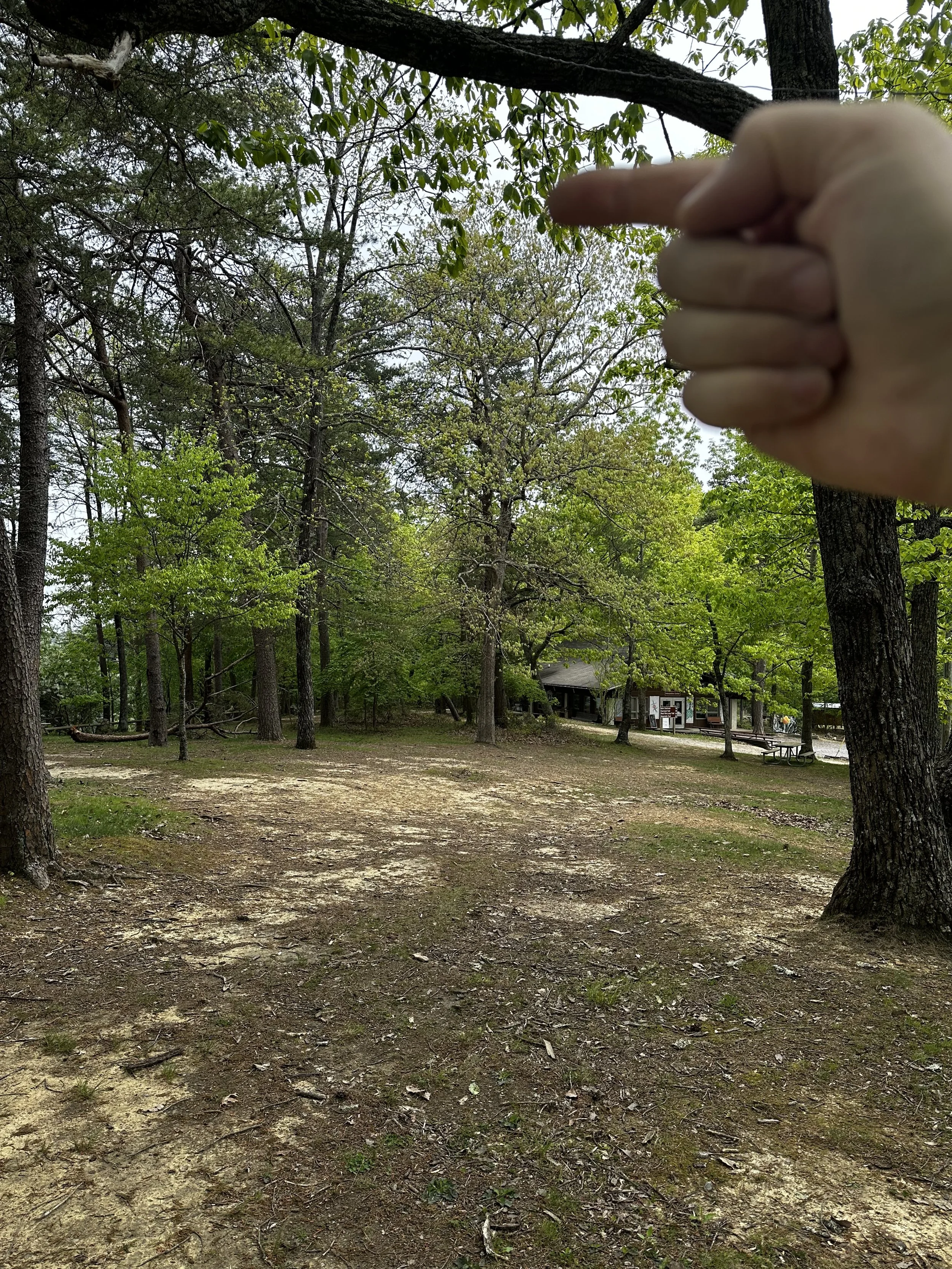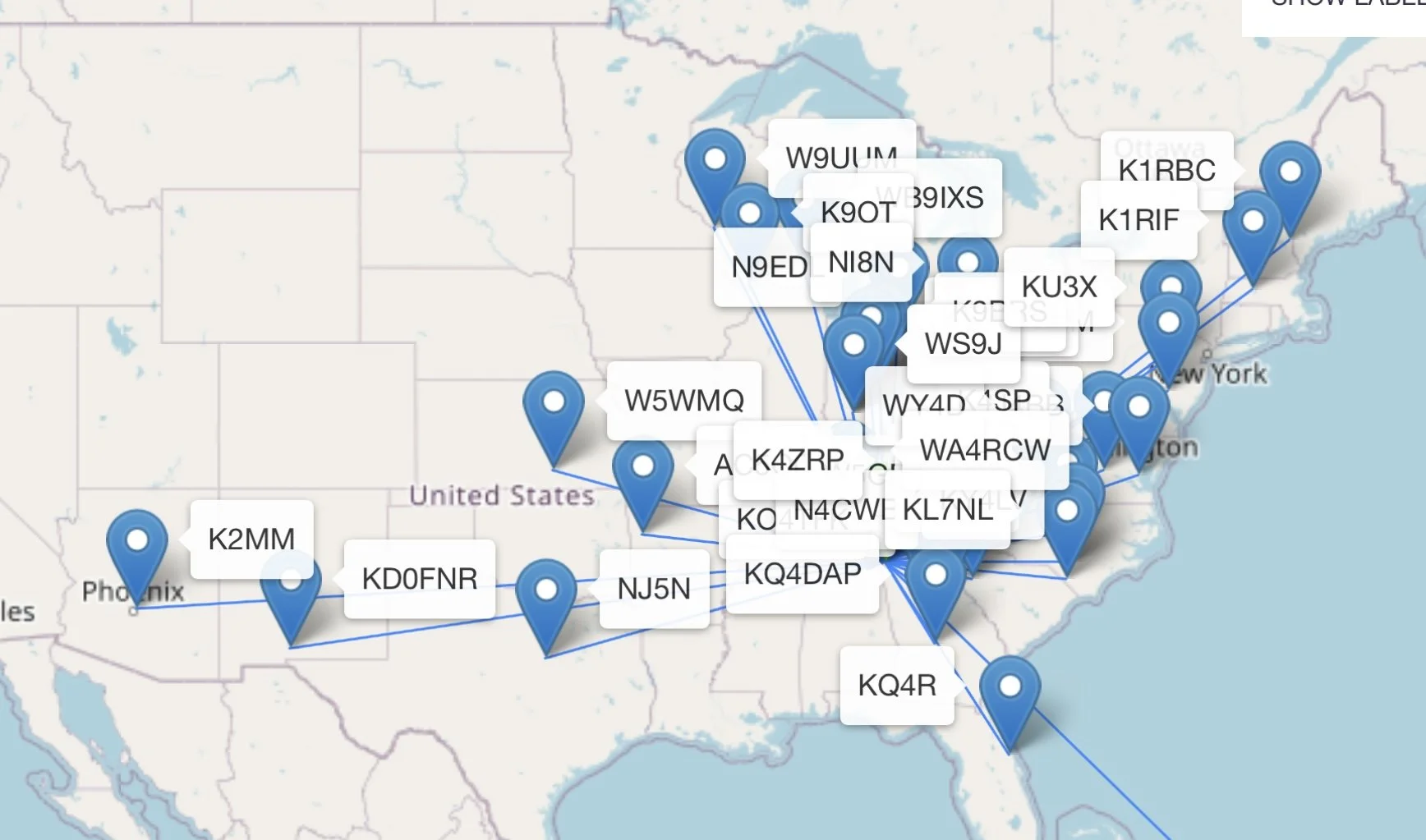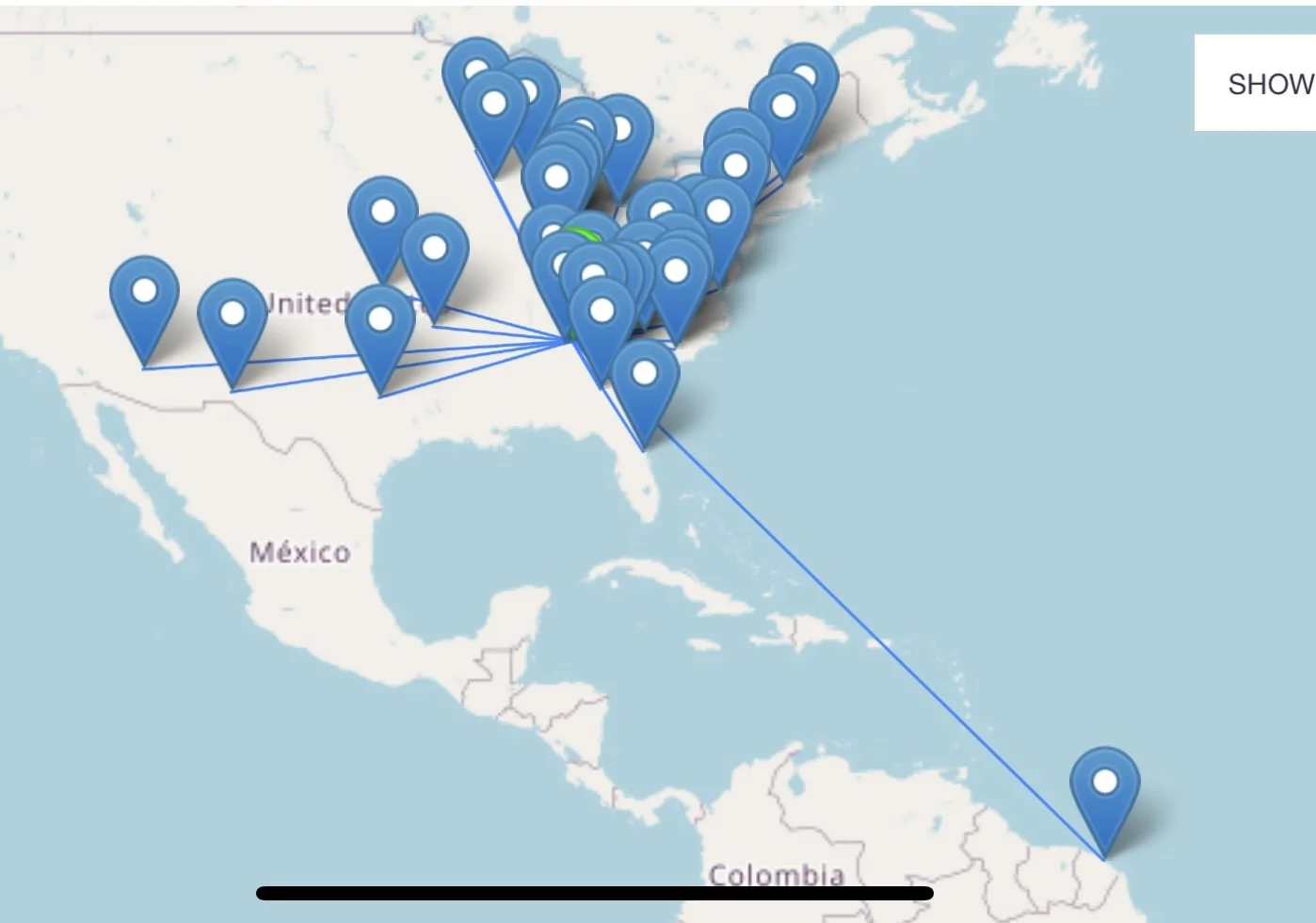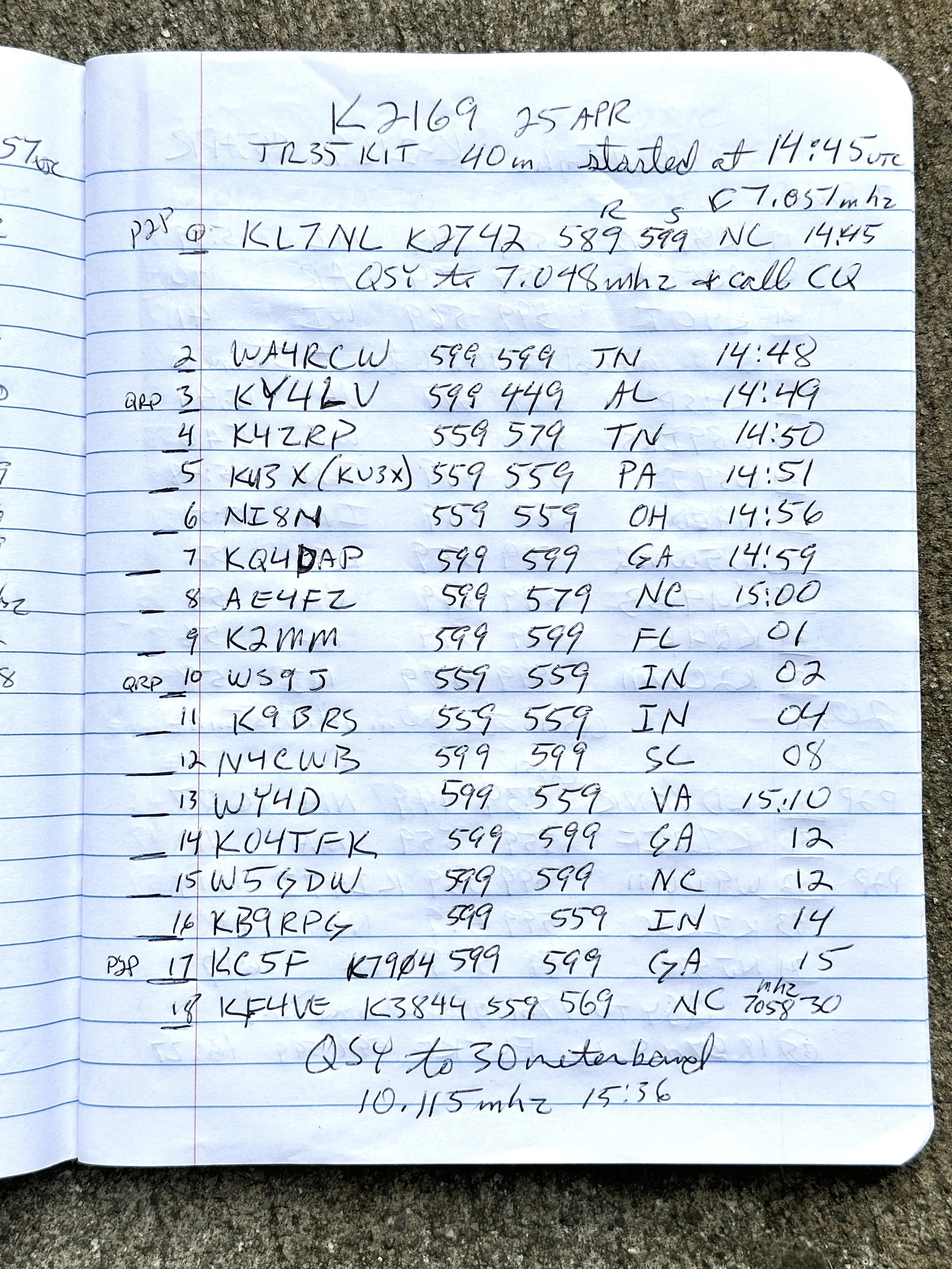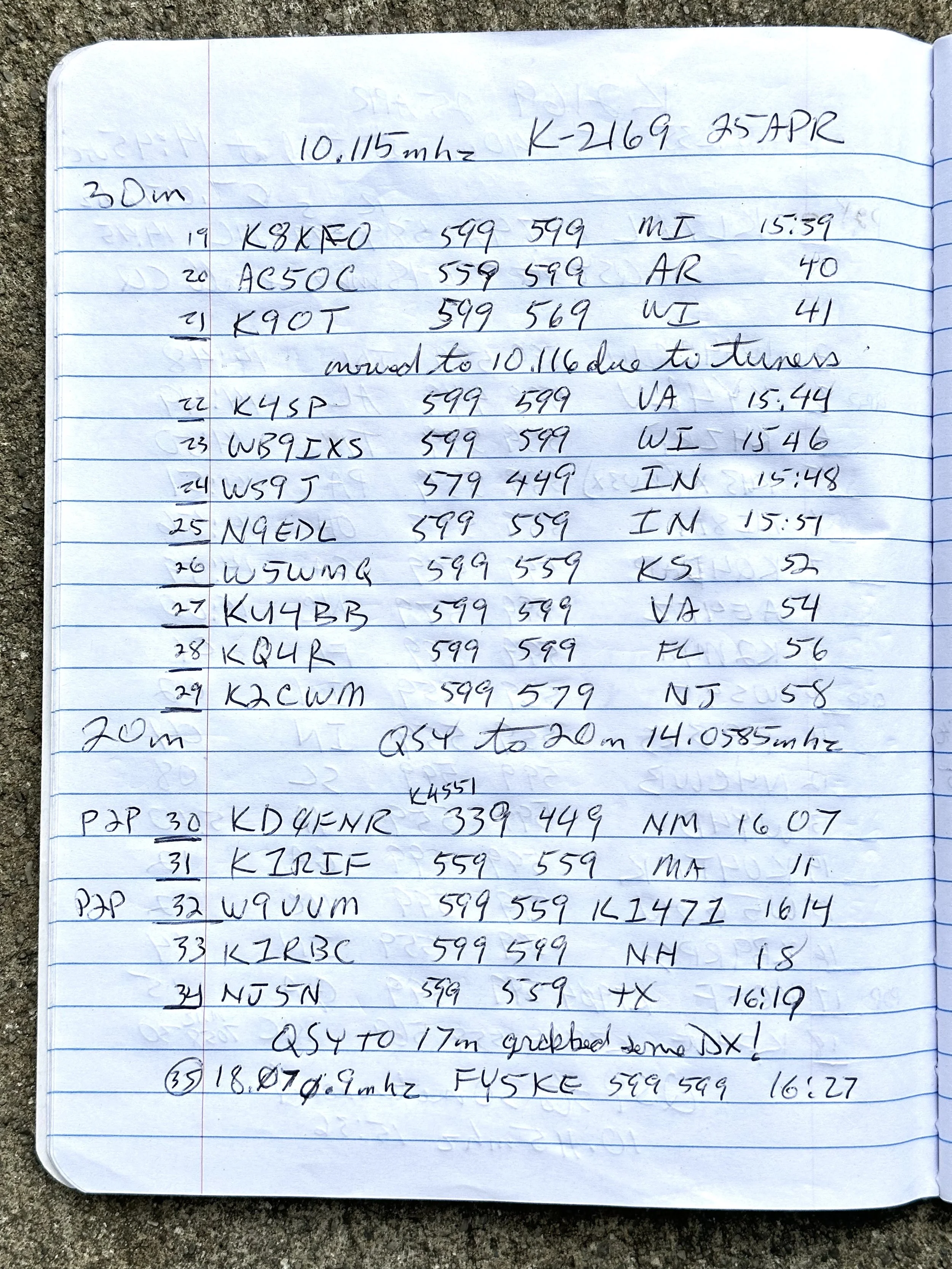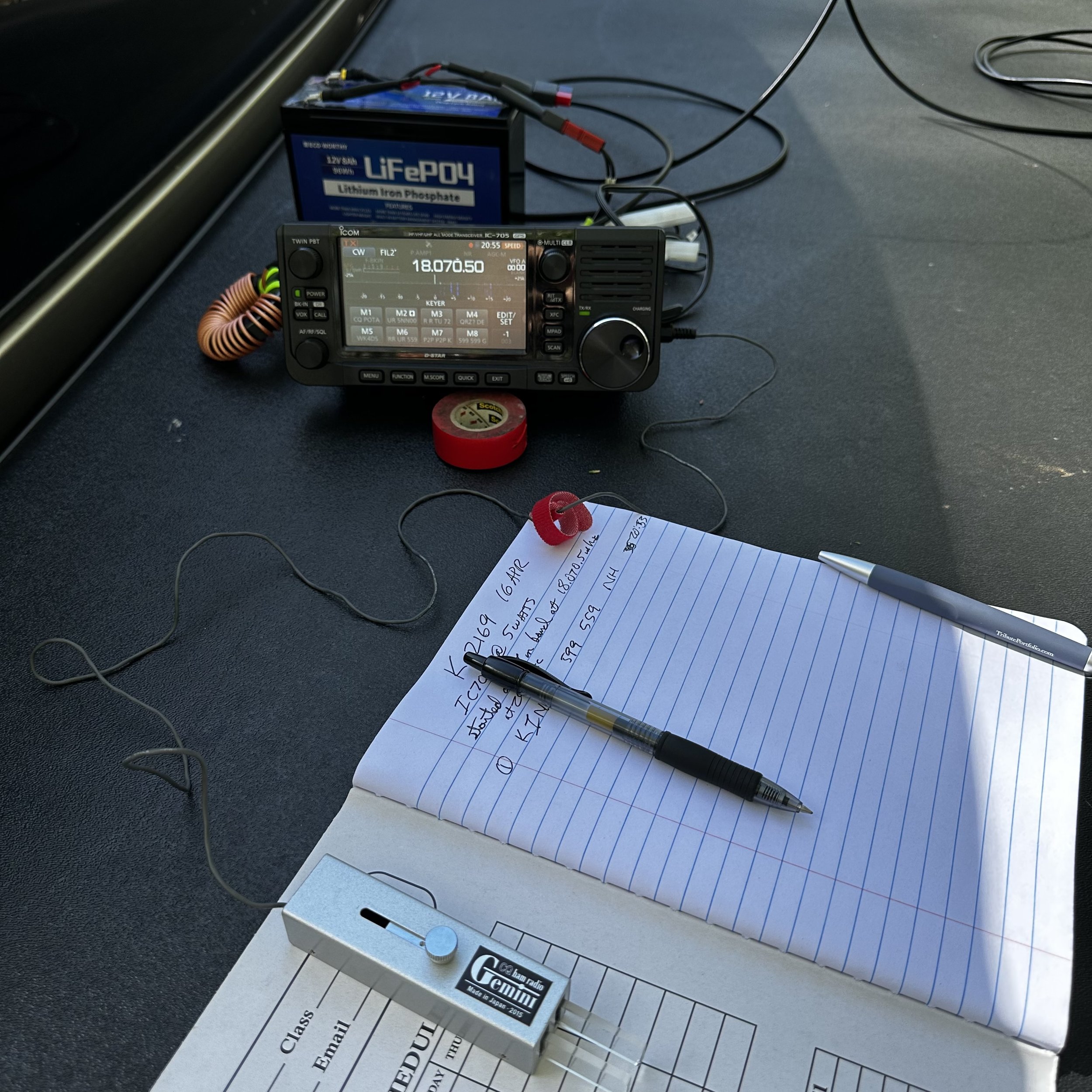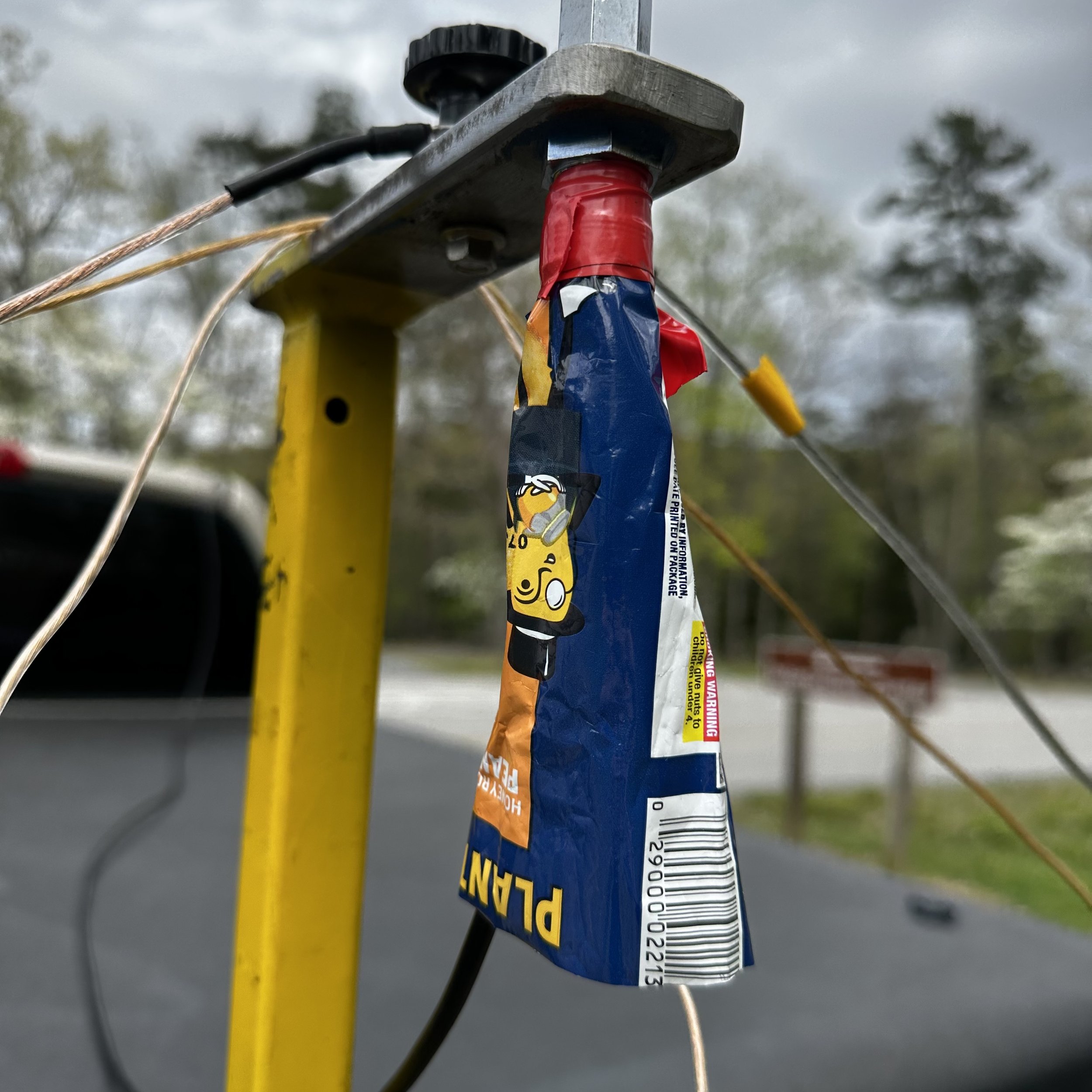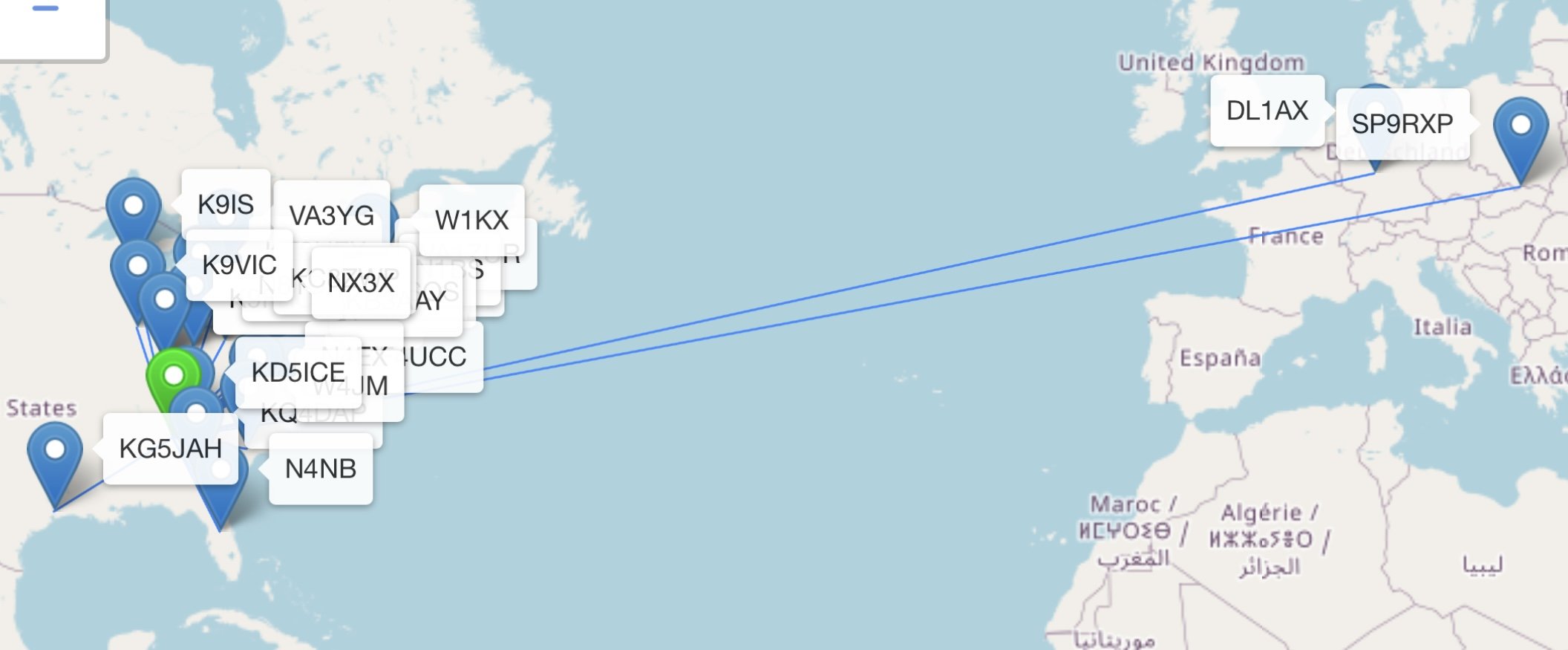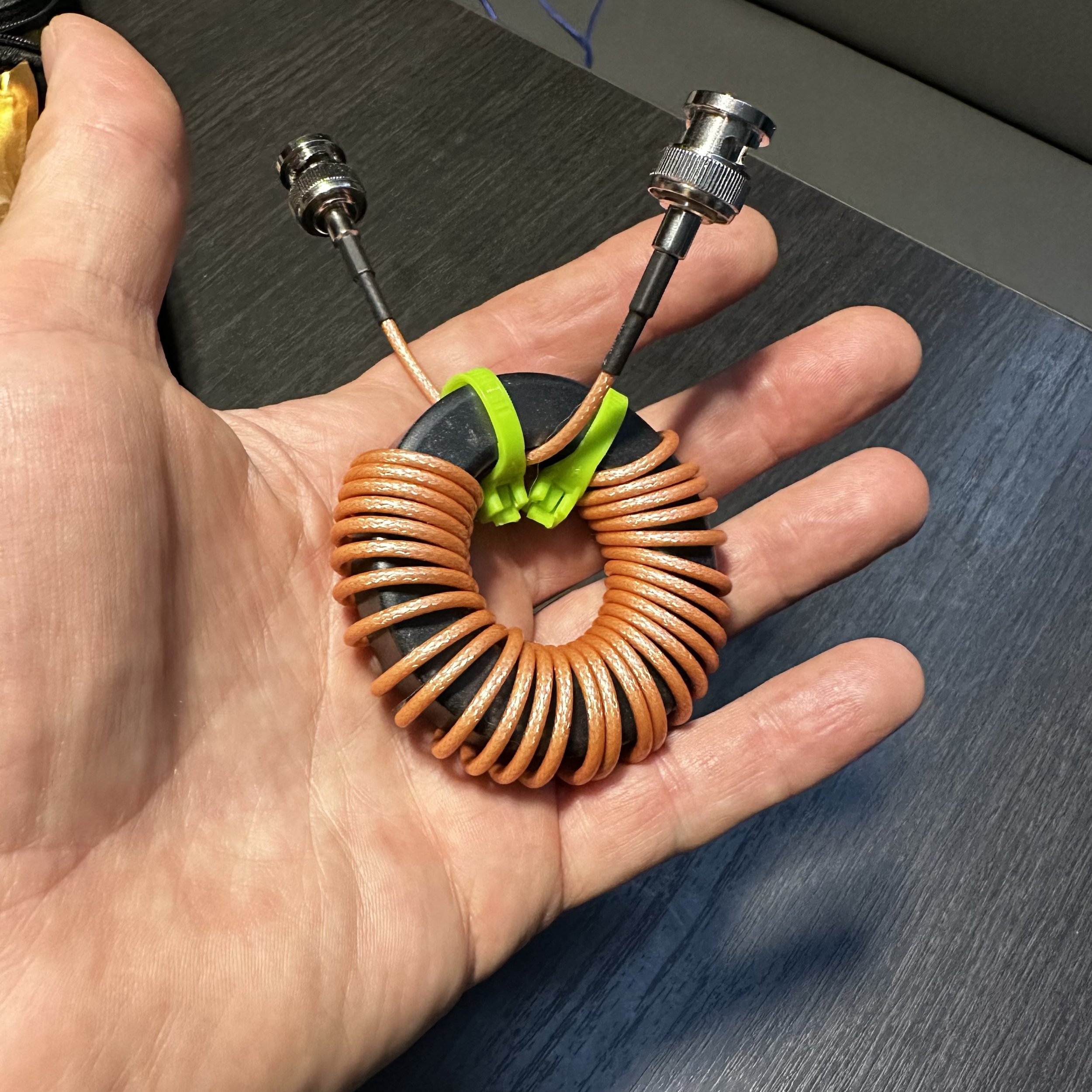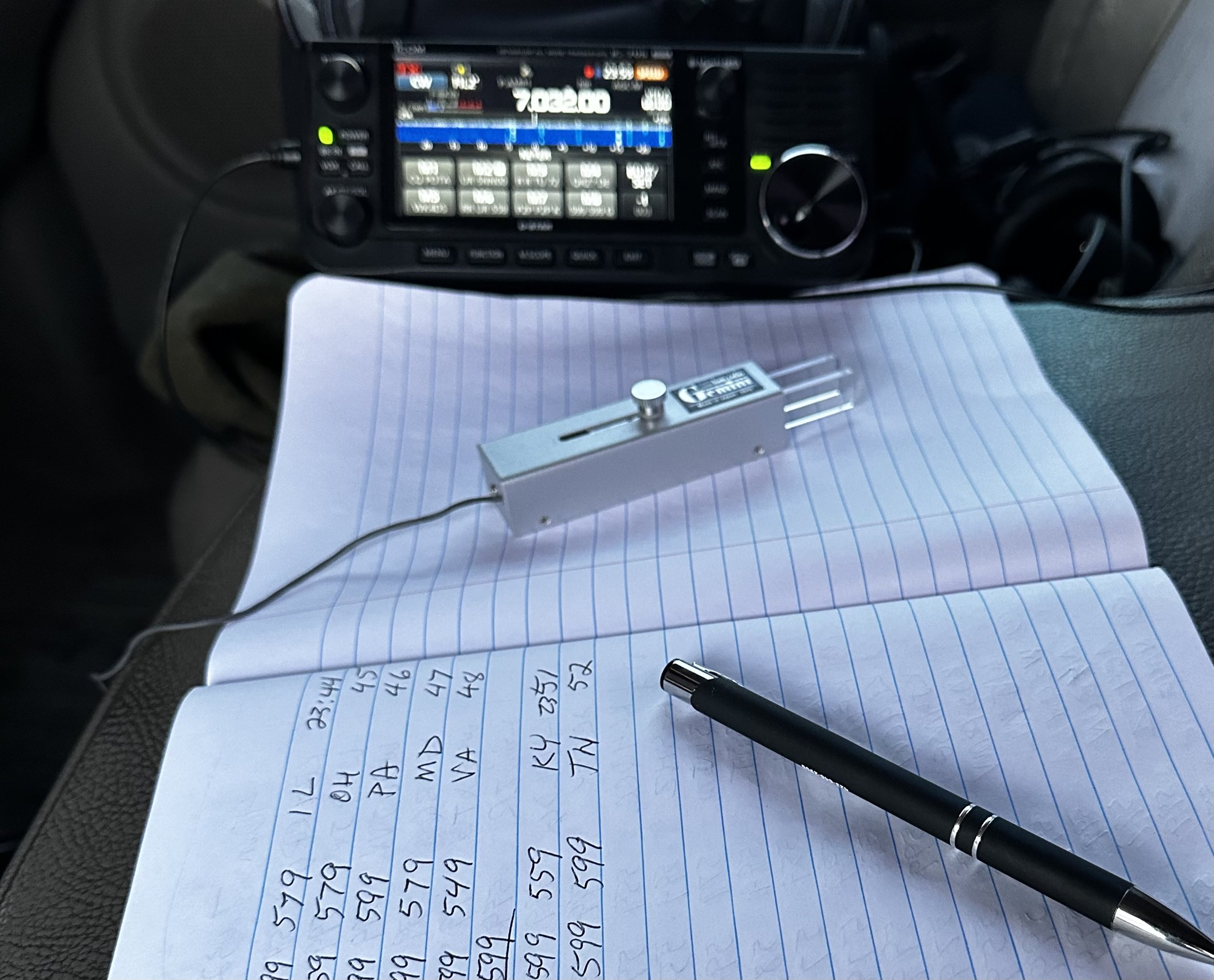Today I went to K-2169 (Cloudland Canyon State Park) and setup my Ten Tec Argonaut 5 and proceeded to work 15 meters with the intent to not get on 20 meters at all. (I did wander down to 17 meters but not till I had secured the activation on 15 meters first.) I just enjoy the pursuit of the higher bands for some reason. I really like to work 15 meters in particular and I have no good reason why either… I pulled the wire up into a tree in an almost vertical orientation but it could still be called a sloper if you held you head right. Probably a 60 degree angle sloper, but it was up in the tree and the 13’ counter poise was 90 degrees to it.
The view from my operating position never gets old. I love activating this park with the view and the tree canopy giving almost perpetual shade it makes for a wonderful location almost all year round.
This is the view directly behind me. There was a fairly lively family reunion or some such happening in this shelter. I had to turn up the volume a couple of times to be able to hear over them. LOL. This is also one of the reasons I like the location I am at, should it start to rain, I can just unhook the antenna wire and battery and basically carry the radio and tuner to the shelter in just seconds.
Once again, the Ten Tec Argonaut 5 was front and center. I have really grow to love this little radio. I can see why they have such a cult following, the receiver is great, the filters are simple to use and effective, the radio has minimal menu options that mainly follow the “set n forget” ideology, What’s not to love for a CW op? I think going forward this will be my main POTA radio for ops where I am near the truck and I will use the Penntek TR-35 for backpack ops due to its small size.
Another thing I did today was bring one of my large keys, this one has been out of the house several times already so it is no stranger to a picnic table. It is my prototype CW key I made many years ago, it works wonderfully too. I actually use it more than the newer model I made later that is still on the bench connected to the Omni 6+…
I am also using the HamGadgets keyer I picked up off of eBay a while back. This little keyer is the reason I now like using the Argonaut 5 on activations. The Argonaut doesn’t have memories in the keyer, so you have to pound out every bit of the code you send with it. This allows me to record some messages like my CQ and such so I can just hit a button and send the whole call for POTA.
Here we have something that a lot of people gloss over. Fuses. Also note that I have the battery connected to the input fuse and I deliberately chose the 10 amp fuse for the Argonaut since it is only 20 watts out. I need to take my inline meter and see what the draw is on dead key and adjust accordingly but for now I know the battery and radio are fuse protected like this. Don’t neglect to add fuses to your portable system, it still matters as much as at home. This is not a name brand fuse bank either which means I wont load it as heavy as they advertise, we all know these are built to the edge of spec anyway.
I wanted to show the case I transport the radio in. This is some sort of surplus military case that we picked up as Huntsville Hamfest last year for really reasonable money. A little cutting here and there and some new closed cell foam and contact adhesive and we have a case to carry the Argonaut 5 and a MFJ antenna tuner with a wire antenna connection input on it as well. You can see the tuner still in the case as I was using my Ten Tec tuner today since it was in the box with the antenna.
Well, I got on the air today on 15 meters and heard a good bit of band activity and so I figured I would check the POTA spots to see who all was on 15…turns out I was the only one on 15 meters on the spot page. I didn’t check it after that for a while but when I did there still wasn’t anyone other than me that was there. I don’t know why other than the QSB (fading) that was happening. You can see the timestamps in my log where I would go 3 or 4 four minutes without so much as a call and then I would get several in a row. You can also see from the signal reports that when they did come in, they came in strong! As I was working through a tiny pile up with NK8O and VE3CT I could hear a weak station near the noise. Once I cleared the other two stations I could hear YS1MS coming out a little louder now! I was stoked to get central America in the log today! Yeah, I know the Oregon call was probably further away, but I got a DX call in the log from El Salvador today!!! WooHoo! When 15 is open is goes WAY out there! KJ7DT came booming in to me right off the bat. Man I love this hobby!
So it seemed that 15 meters started to close or something as I went several minutes without a call so I decided to tune up on 17 meters and see what I could scratch up. Well, 17 did not disappoint. I worked several stations fairly quickly and I could tell that I was on a lower band than before as the station that was coming in loud on 15 that was kind of near me (N2DI) was weaker on 17 meters. I actually worked several hams on both bands today, which is always awesome. But I did notice several hams from out west were on 17 but not 15 meters. You will notice two Idaho stations, two Utah stations and a Arizona station. It was almost like the signal on 15 hopped right over these guys or they don’t have a 15 meter antenna…who knows to be honest. Anyway at about 21:43 UTC I hit a little pileup of 3 or 4 stations and once again started pulling the callsigns out one at a time. I kept hearing this station down near the noise, but it was solid, just the other stations were a lot louder and I could copy them easier so I went ahead and worked them out. Then I started pulling out the call. I got the number right away, it was a 1 and I knew I had heard the CC at the end…what was that first letter again? W? No, that isn’t right. “UR CALL?” J… It was a J callsign!!! I have never worked a Japan call before, I have never honestly heard a Japan ham loud enough to be able to make a QSO with them, I have heard them before but they were down in the noise. This one was weak, but clearly I could hear the call. J…H…1…O…C…C… YES, it was Japan!!! I couldn’t believe it when he gave me a 539 with my compromise antenna and 20 watts of power! I was on cloud nine for a few minutes after this. I even bragged to my buddies about it. It was a great day today. I had hoped to work a few J calls while I was in Hawaii, but never heard one while I was there. That is just how it goes…lol.
I ended up with 29 QSOs in the log today which is a great day as it means I secured the activation as I worked several DX stations to boot. What is your favorite DX station you have worked while operation portable or picnic table mobile or some such?
73 WK4DS


















